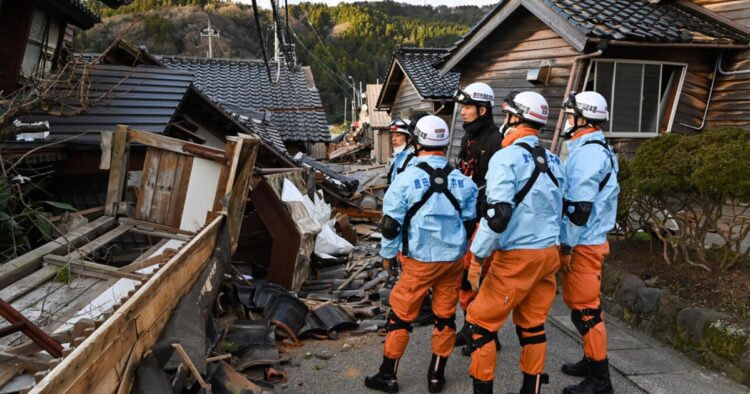A series of strong earthquakes, including one with a magnitude of 7.5, struck Japan, leading to a rising death toll of 62, as reported by NHK World. The hardest-hit area is the Ishikawa prefecture, particularly in Wajima and Suzu on the Noto Peninsula.
Over 20 people are severely injured, and authorities are working to confirm the number of missing individuals, with fears that many may be trapped under collapsed houses. The earthquakes, which occurred on Monday, caused buildings to crumble and triggered tsunami warnings extending as far as eastern Russia. The Japan Meteorological Agency recorded a total of 155 earthquakes in the country on that day.
Rescue efforts faced challenges on Tuesday as aftershocks and adverse weather conditions hampered the search for survivors amidst the rubble. The JMA issued warnings of heavy rainfall in Noto, cautioning against landslides until Wednesday evening.
Tragically, a setback occurred when an aircraft carrying emergency supplies caught fire after a runway collision at Haneda airport on Tuesday. This incident resulted in the loss of five coastguard crew members.
Japan’s Prime Minister Fumio Kishida emphasized the urgency of the situation, acknowledging that time is of the essence in rescuing those potentially trapped in collapsed buildings. The government, under Kishida’s leadership, will convene an emergency task force meeting on Wednesday morning to discuss relief and rescue operations.
In Suzu, a coastal city heavily affected by the earthquakes, Mayor Masuhiro Izumiya described the catastrophic situation, noting that almost no houses are standing. Approximately 90% of the town’s houses are either completely or almost completely destroyed, highlighting the severity of the devastation, according to broadcaster TBS.
Japan, accustomed to frequent earthquakes, faces a grim reminder of the 2011 undersea quake with a magnitude of 9.0, which triggered a devastating tsunami and left around 18,500 people dead or missing. The recent earthquakes serve as a somber reflection on the nation’s vulnerability to natural disasters.

















Comments